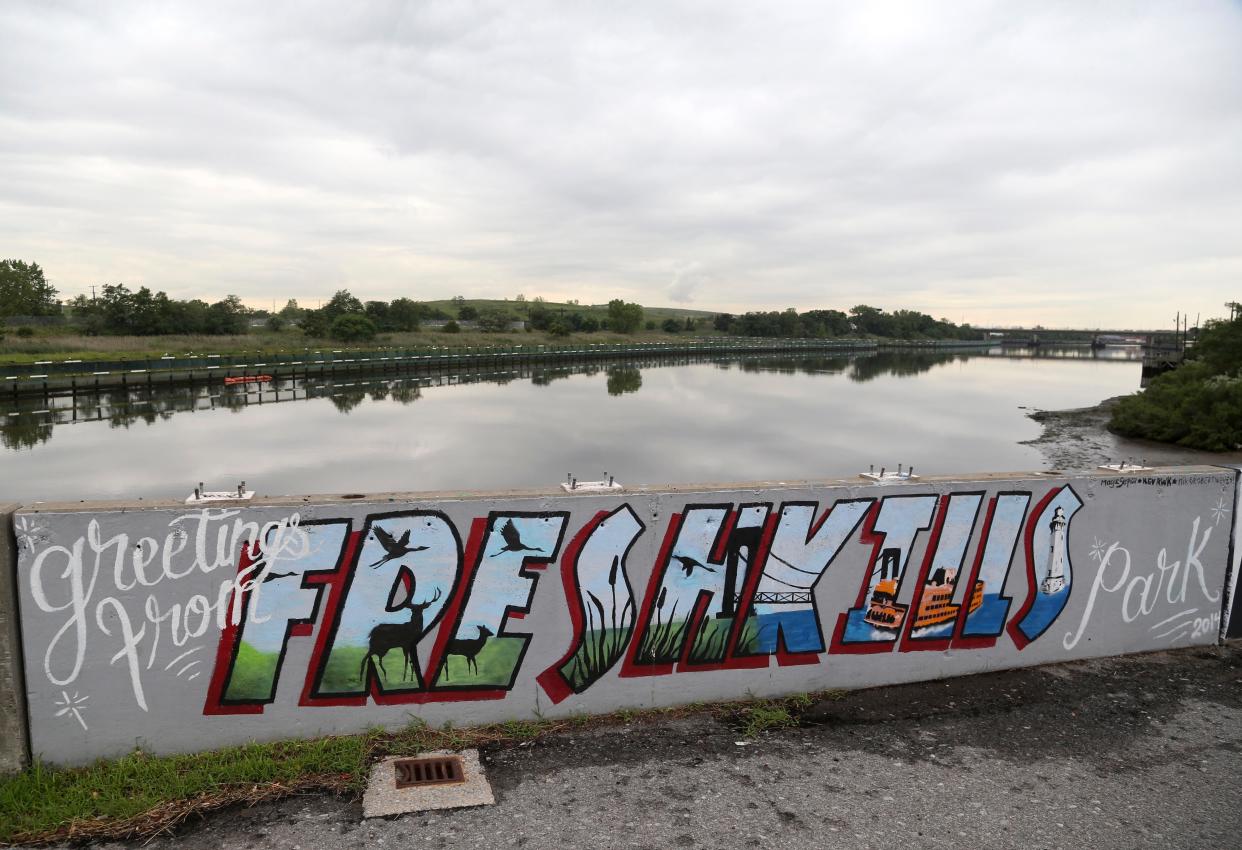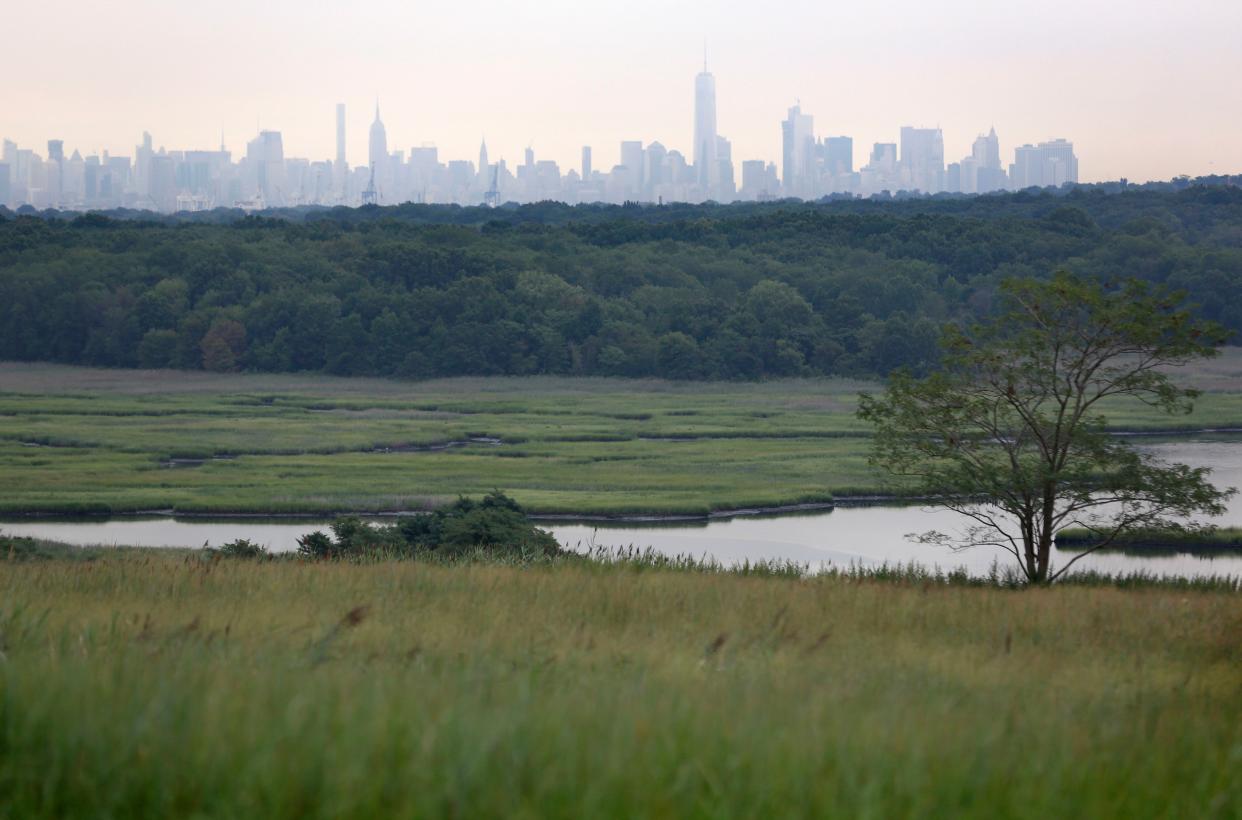The certified closure of Staten Island’s Fresh Kills landfill will become 21 acres of green space
It was once the largest landfill in the world, a behemoth dumping ground that opened in Staten Island’s swamps after World War II.
Barges brought bilious heaps of trash to the Fresh Kills landfill for a half century, haunting locals and sending horrible fumes wafting out over western Staten Island.
At its 1980s peak of productivity, the landfill — which was more than four times the size of Brooklyn’s Prospect Park — took in some 30,000 tons of trash a day as hundreds worked the waste site.

In this picture taken Thursday, Aug. 18, 2016, a painted sign adorns a bridge in Freshkills Park in the borough of Staten Island, New York. (Seth Wenig/)
But in 2001, to the relief of Staten Islanders, the stream of steaming barges stopped coming. The city closed the dump.
The last barge of residential trash hauled about 500 tons on March 22, 2001. (The site also processed more than 1 million tons of debris after the Sept. 11, 2001, attacks, according to the city.)
Two decades on, the city is working to turn the site into a park, with hopes of completion by 2035. And on Tuesday, the city Sanitation Department celebrated the landfill’s formal certification of closure construction work.
The certification, granted by the state Department of Environmental Conservation, took place on May 4, according to the Sanitation Department, which said it will continue monitoring and maintenance at the 2,200-acre plot.

In this picture taken Thursday, Aug. 18, 2016, the skyline of New York City is seen behind a section of the Freshkills Park in the borough of Staten Island, New York. Diverse wildlife habitats, acres of grasslands, creeks for kayaking and meadows for hiking and biking. (Seth Wenig/)
“More than two decades later, I can still remember the awful stench of the landfill,” Rep. Nicole Malliotakis, a Staten Island Republican, said in a Tuesday statement.
“It was the top quality-of-life issue for Staten Island for so many years, and this final stage in its closure is something to be celebrated,” Malliotakis added in the statement.
The Sanitation Department said the project to turn the trash heap into a green space is the largest dump-to-park project of its kind in the world.
A 21-acre portion of the park is scheduled to open within the grounds of the former landfill this year, and is expected to include a 7-acre seed farm and a bird observatory.
“There is no better cure for New York City’s recovery than our parks and open spaces,” Mayor Adams said in a statement. “By transforming Fresh Kills landfill into a park, we are supporting that recovery and providing New Yorkers with access to clean, new green spaces.”
